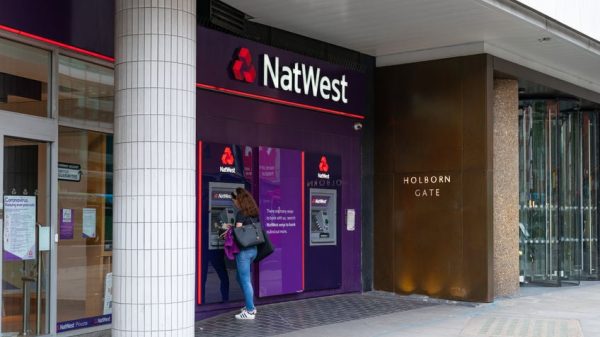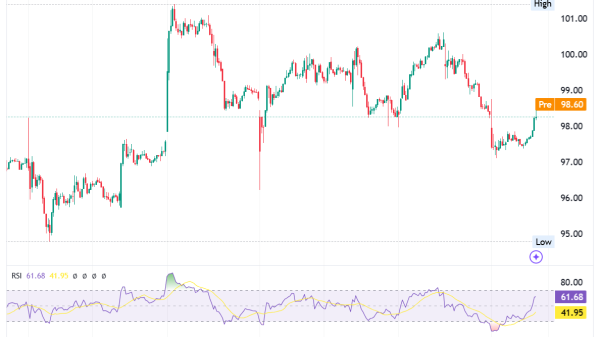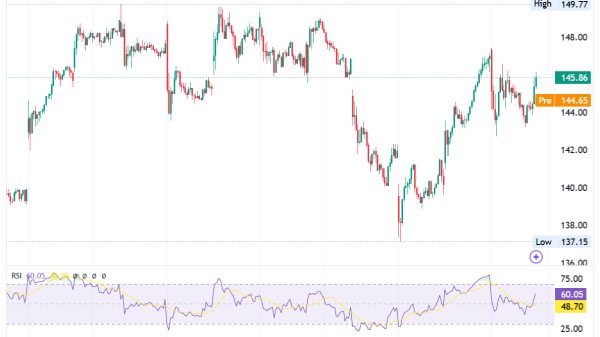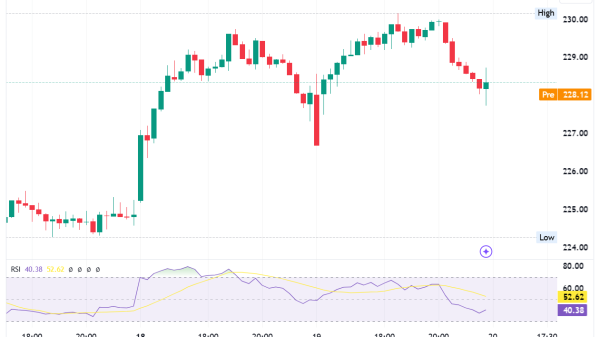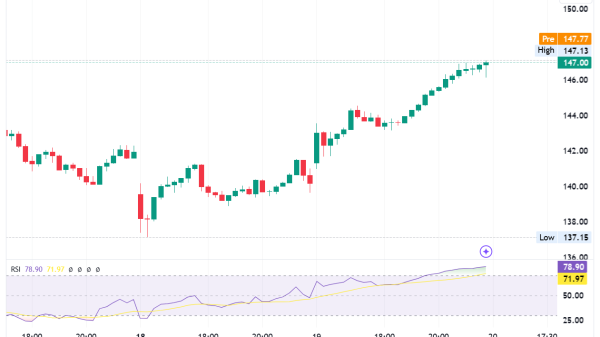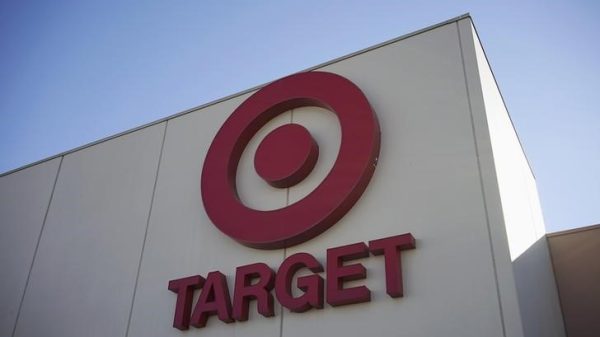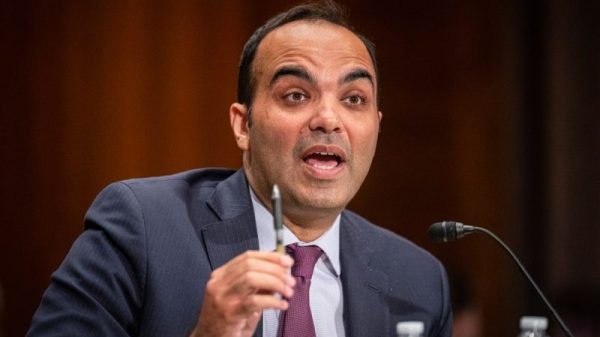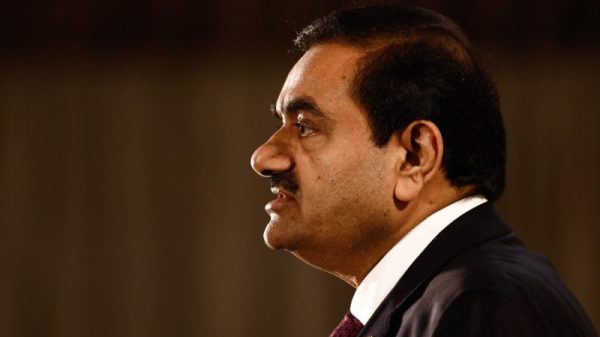
MakeMyTrip Limited (NASDAQ: MMYT), a leading online travel company, announced its fiscal 2025 second-quarter results, showing a significant year-on-year growth in gross bookings and adjusted operating profit. Despite heavy rainfall impacting demand, the company reported a gross booking value of $2.3 billion, a 24.3% increase in constant currency terms.
The adjusted operating profit was up by 33% to $37.5 million. The company’s expansion in supply and AI-driven enhancements contributed to its performance, outpacing industry growth. International air ticketing and hotel revenues saw substantial increases, and the company’s expanded hotel offerings now span across 165 countries. The corporate travel segment and customer loyalty initiatives also showed promising development.
Key Takeaways
- Gross booking value rose to $2.3 billion, a 24.3% year-on-year increase in constant currency terms.
- Adjusted operating profit grew by 33% to $37.5 million.
- International air ticketing revenue grew by over 39%, and international hotel revenue surged by 62% year-on-year.
- The company’s supply-side expansions and AI-driven enhancements helped outperform industry growth.
- MakeMyTrip launched a new loyalty program and a co-branded credit card with ICICI Bank.
- The company maintains a strong cash position, exceeding $700 million, and plans for share buybacks.
Company Outlook
- Early indicators for October suggest a positive outlook for the holiday season.
- The company’s GenAI technology deployment is expected to enhance efficiency and customer experience, with significant financial impacts anticipated in future quarters.
Bearish Highlights
- Heavy rainfall affected demand in the reported quarter.
- Concerns about a consumption slowdown were mentioned, although early October indicators are positive.
- Geopolitical tensions could pose near-term headwinds for international travel.
Bullish Highlights
- The company’s hotel offerings increased to over 84,000 accommodations in India and direct international hotel contracts in over 40 cities.
- Gross bookings for the Hotels and Packages segment reached $517.2 million, a 21.2% year-on-year increase in constant currency.
- The Bus Ticketing segment saw a 21.5% year-on-year growth in gross bookings.
Misses
- The company did not report any significant misses in the earnings call.
Q&A Highlights
- CEO Rajesh Magow addressed the trend of airlines driving direct traffic to their websites, indicating that consumer behavior favors exploring multiple options.
- CFO Mohit Kabra discussed the company’s buyback program, with $135 million still available for repurchase, and openness to increase this amount as needed.
- Kabra also highlighted strong customer retention with 70% of transactions from repeat customers and stable margins without significant seasonal fluctuations.
- The company is focusing on both organic and inorganic growth opportunities in domestic and international markets.
In conclusion, MakeMyTrip’s fiscal 2025 second-quarter earnings call demonstrated the company’s resilience and strategic growth despite industry challenges. With a strong financial position and customer-centric innovations, MakeMyTrip is poised to capitalize on the expanding travel market in India and beyond.
InvestingPro Insights
MakeMyTrip Limited’s (NASDAQ: MMYT) strong fiscal 2025 second-quarter results are further supported by key financial metrics and insights from InvestingPro. The company’s impressive gross profit margins, as highlighted by InvestingPro Tips, align with the reported 53.29% gross profit margin for the last twelve months. This robust profitability underscores MakeMyTrip’s ability to maintain healthy margins despite industry challenges.
The company’s revenue growth of 29.87% over the last twelve months, as reported by InvestingPro Data, corroborates the significant year-on-year growth in gross bookings mentioned in the earnings call. This growth trajectory is particularly noteworthy given the company’s already substantial market cap of $11.05 billion.
An InvestingPro Tip indicates that MakeMyTrip holds more cash than debt on its balance sheet, which is consistent with the company’s reported strong cash position exceeding $700 million. This financial stability supports MakeMyTrip’s plans for share buybacks and potential investments in growth opportunities.
However, investors should note that the stock is trading at a high earnings multiple, with a P/E ratio of 51.39. This valuation suggests that the market has high expectations for MakeMyTrip’s future performance, which the company will need to meet to justify its current stock price.
For those seeking a more comprehensive analysis, InvestingPro offers 15 additional tips for MakeMyTrip, providing a deeper understanding of the company’s financial health and market position.
Full transcript – MakeMyTrip Limited (MMYT) Q2 2025:
Vipul Garg: Hello everyone. I am Vipul Garg, Vice President, Investor Relations at MakeMyTrip Limited. Welcome to our Fiscal 2025 Second Quarter Earnings webinar. Today’s event will be hosted by company’s leadership team comprising Rajesh Magow, our Co-Founder and Group Chief Executive Officer; and Mohit Kabra, our Group Chief Financial Officer. As a reminder, this live event is being recorded by the company and will be made available for replay on our IR website shortly after the conclusion of today’s event. And at the end of these prepared remarks, we will also be hosting a Q&A session. Furthermore, certain statements made during today’s event may be considered forward-looking statements within the meaning of Safe Harbor provisions of the U.S. Private Securities Litigation Reform Act of 1995. These statements are not guarantees of future performance, are subject to inherent uncertainties, and actual results may differ materially. Any forward-looking information relayed during this event speaks only as of this date and the company undertakes no obligation to update the information to reflect changed circumstances. Additional information concerning these statements is contained in the Risk Factors and forward-looking statements section of the company’s annual report on Form 20-F filed with the SEC on July 2, 2024. Copies of these filings are available from the SEC or from the company’s Investor Relations Department. I would like to now turn the call over to Rajesh. Over to you, Rajesh.
Rajesh Magow: Thank you, Vipul. Welcome, everyone, to our second quarter call for Fiscal 2025. We are pleased to report another quarter of strong business results with robust growth in the top line and bottom line. Gross booking value for the quarter stood at $2.3 billion, registering strong year-on-year growth of 24.3% in constant currency terms. Adjusted operating profit at $37.5 million, registered a year-on-year growth of about 33%. We managed to deliver this strong performance across all our business segments, leveraging our brand and distribution strength, and despite the short-term headwinds due to unusual heavy rainfall that impacted demand momentum a bit in an otherwise traditionally low-season quarter for leisure travel. We have been consistently outpacing the industry’s growth on the back of continued supply-side expansion, catering to a variety of travel needs of the Indian consumer, implementing several AI and data science-driven product features, leading to personalized recommendations to improve customer experience and high proportion of repeat customers. On the macroeconomic front, India’s strong growth trajectory remains a compelling narrative on the back of advancements across sectors. As per IMF estimates, India is expected to become the world’s third-largest economy by 2027, after the U.S. and China. The economic rise is fueling the growing consumer class, leading to higher discretionary spending. Travel and tourism industry is one of the biggest beneficiaries of this increased discretionary spending. Furthermore, our younger generation, aged between 25 and 34, are increasingly willing to travel and explore more. A 5th of the population will age into that group soon, helping the travel segment to grow further. As per Bernstein estimates, the annual spending on foreign travel by Indians will nearly triple to $89 billion in three years. The number of valid Indian passports has also nearly doubled from 52 million a decade ago to 93 million this year. On the other hand, India’s digital economy has been tagged as one of the fastest-growing in the world, and the government’s path-breaking Digital India initiatives are playing a critical role in increasing internet and e-commerce penetration. We have been capitalizing on some of these macro trends by constantly improving our product and value proposition for the international outbound travel market. We enhanced the business class funnel experience for international flights and have revamped the premium economy class booking flow as well. The new funnel features — features rich visuals and detailed amenities, delivering a premium and seamless booking experience that aligns perfectly with the high-end services offered. Similarly, for international hotels, we are enhancing supply and offering options that are relevant to Indian consumers. On the customer journey flow side, we have been dialing our features that cater to the unique needs and preferences of Indian consumers, for example, culinary preferences, family-friendly services, etcetera, thus offering a more personalized experience. As a result, our international air-ticketing business and international hotel business continue to witness faster growth than the industry. International air-ticketing business posted year-on-year revenue growth of over 39% in constant currency terms and now accounts for 38% of the adjusted margin in the air-ticketing business compared to 33% in the same quarter last year. Our international hotels outbound business revenue grew 62% year-on-year in constant currency terms and now accounts for about 17% of the adjusted margins from this segment compared to 12.5% in the same quarter last year. We are not only growing in our traditional markets like Thailand, Singapore, the Middle East, and Malaysia, but also in newer destinations like Georgia, Vietnam, Hong Kong, Azerbaijan, Kazakhstan, etcetera. During the quarter, we sold 32,000-plus international hotels across 2,384 cities in 165 countries, which is the highest-ever spread achieved till now. Total air-ticketing business witnessed strong growth. Adjusted margin grew by 21.1% year-on-year in constant currency, despite persistent supply issues in the domestic market. Our accommodation business overall, which includes hotels, homestays, and packages, continues to grow at a robust pace as well. We recorded 21.4% year-on-year growth in the adjusted margin on a constant currency basis. As mentioned earlier, the prolonged monsoon along with a significant increase in heavy rainfall had impacted demand during parts of this quarter. However, our combined strategy of supply-side expansion and sharper targeting of a variety of customer segments with multiple distribution channels has helped us grow in the 20s. In our Holiday Packages business, growth was led by emerging destinations like Australia, Japan, and Egypt. During the quarter, we partnered with LEGOLAND Malaysia Resorts to offer holiday packages with a unique blend of LEGO adventures and rich Malaysian cultural experiences. In our Bus business, we continue to see broad-based growth across all regions in the country. On the product side, our localization push continues with launch of Telugu Funnel on Android and extending the Tamil Funnel on the mobile web. Bus Ticketing in some of the international markets where we are present continues to grow faster with the contribution of revenue from international markets now reaching 12% of the total bus revenue compared to 10% in the same quarter last year. Our investments in other transport services such as Intercity Cabs and Trains helped us to deliver 17.6% quarter-on-quarter growth in constant currency in a seasonally weaker leisure travel demand quarter. Our Corporate Travel business via both our platforms such as myBiz and Quest2Travel is witnessing strong growth. Our active corporate customer count on myBiz is now over 59,000-plus, and for Quest2Travel, the active customer count has reached 462 large corporates. We continue to enhance our product capabilities. We completed over 60 integrations with travel and Expense Management Solution Partners like MyClaims, Darwinbox, Zoho, and FastCollab. We also went live with complete self-serve HRMS integrations connecting more than 200 organizations through the HRMS connector to enable better management of travel expenses. On Q2T, we introduced the official Q2T mobile application providing greater accessibility and convenience for corporate clients. Overall, we now have a lifetime transacted user base of 77 million customers across all our three brands. We continue to deepen engagement with our existing customers and add new customers to the platform every quarter. To help consumers make all their bookings on a single platform, we have launched a considerably improved connected trips experience completely built in-house on the strength of our data science capability, enabling consumers to book other products and services needed for the trip. It is helping us drive cross-sell and up-sell other services. As part of our retention and loyalty strategy, we revamped our MMT Black Program on MakeMyTrip and goTribe loyalty program for our Goibibo customers last quarter with more relevant inclusions like meal and room upgrades, airport pickup, F&B offers, etcetera, for our customers. This quarter, we launched our new co-branded credit card in partnership with ICICI Bank, which is one of the leading private banks in the country. With its impressive value proposition, this should help us drive both new customer acquisition as well as repeat transactions on our platforms. Before handing over to Mohit, I want to provide an update on our initiatives regarding the deployment and adoption of GenAI, a core part of our innovation strategy. Last quarter we introduced our GenAI chatbot Myra on our international flights funnel. The initial response has been encouraging, with Myra successfully handling queries on topics such as date changes, flight details and ancillaries. This quarter we’ve launched Myra to enhance the hotel and homestay booking process by offering real-time assistance, leveraging Generative AI and years of proprietary data, including customer reviews. The chatbot delivers accurate and personalized responses to even the most detailed inquiries. We plan to further expand its capabilities to handle pricing and availability queries as well as provide personalized hotel recommendations. This aligns with our strategy of using AI-driven solutions to boost customer satisfaction and drive growth. Similarly, our AI deployment initiatives have been very successful in addressing pre-journey queries on the redBus app via the GenAI based bot, which has not only resulted in an improvement in customer satisfaction scores but also productivity gains with an almost 45% decrease in the involvement of customer service agents. With this, let me hand over the call to Mohit for the financial highlights of the quarter. Thank you.
Mohit Kabra: Thanks Rajesh, and hello everyone. We have achieved another quarter of growth in the 20s, showcasing strong performance across all business segments. Gross bookings for the quarter came in at $2.3 billion compared to $1.8 billion in the same quarter last year, reflecting a 24.3% year-on-year growth in constant currency. Revenue growth as per GAAP came in stronger at 26.5% year-on-year in constant currency. This performance is particularly noteworthy given the ongoing supply challenges in the domestic air market and the impact of unusually high rainfall during this monsoon season in India. Moving on to our segment results, our Air Ticketing gross bookings for the quarter came in at $1.4 billion, witnessing an year-on-year growth of 20.4% in constant currency. Adjusted margin stood at $96 million, registering a growth of 21.1% in constant currency. We continue to expand both our domestic and international outbound business. While Rajesh has updated about the continued outperformance in the international ticketing side, let me share some more color on the domestic Air Ticketing business. In the domestic Air Ticketing market, while supply was broadly at similar levels in the last quarter, the market growth picked up marginally to about 6% year-on-year on flown basis. We continue to grow faster than the market and our market share stands strong at 30% plus in the domestic flight ticketing business. Gross bookings for our quarter in the Hotels and Packages segment came in at about $517.2 million, registering a growth of 21.2% year-on-year on constant currency basis. Adjusted margin growth was 21.4% year-on-year in constant currency terms, resulting in adjusted margin of $90.7 million during the quarter. While the last couple of years have seen higher than inflationary increases in room rates, this year we are seeing that the room rates have started stabilizing and price increases have moderated. We continue to drive supply expansion by going deeper and wider in the Indian market and growing directly contracted hotels in key international markets which are of interest to Indian travelers traveling overseas. As a result, we now offer over 84,000 domestic accommodations in across 2,100 cities through the length and breadth of the country. We are scaling our direct contracting for international hotels in line with demand trends and now have directly contracted hotel supplies in over 40 international cities up from about 21 cities last year. In our Bus Ticketing business, gross bookings for the quarter stood at $263 million, growing at 21.5% year-on-year in constant currency terms. Adjusted margin stood at $27.1 million, registering a year-on-year growth of over 25.6% in constant currency terms. The take rates in our business continue to remain stable and in line across all our business segments that is Air Ticketing, Hotels and Packages, as well as Bus Ticketing. Similarly, our customer acquisition costs that is Marketing and Sales Promotion Expenses, remain efficient and in line with the same quarter last year at 4.6% of gross bookings. This is slightly lower than the 4.8% in the previous quarter linked to change in seasonality. In addition to driving strong bookings and revenue growth, we remain focused on building operating cost efficiencies and driving operating leverage in our fixed costs, including personal expenses and general or administrative selling expenses, as Rajesh has already highlighted the significant deployment of GenAI in some of these areas. Accordingly, our registered operating profit for the quarter came in at $37.5 million, registering a year-on-year growth of 32.9%. Our cash generation continues to be robust and cash and cash equivalents at the end of the quarter have now gone beyond the $700 million mark. Besides maintaining a healthy watch list, we will continue to leverage this strong cash position to invest in potential organic and inorganic opportunities. We have called out our intent to pursue opportunistic share repurchase or buyback programs at the start of this year. While we could not manage any meaningful repurchases during the reported quarter, we remain committed to the program. With that, I would like to turn the call back to Vipul for Q&A.
A – Vipul Garg: Thanks Mohit. Any participant who wants to ask a question can click on the raise hand button on their screen and we will take the questions one by one. I already have a couple of questions. So the first question is from the line of Sachin Salgaonkar of Bank of America. Sachin, you may please unmute and ask your question now.
Sachin Salgaonkar: Thanks Vipul. Congrats on a good set of numbers. I have three questions. First question, I wanted to understand a bit more on hotel booking growth. It did appear to be slightly slower than previous quarters, but I did also hear the comments from Rajesh early on about unexpected monsoon. Is this a one-off we should look and then the growth should normalize going ahead or anything else which has started to impact the growth out here?
Rajesh Magow: Yeah, hi Sachin. Maybe I can take that. Yes, I guess the way I was alluding to, and if you break the quarter, we actually saw July and August growth were normal and some temporary headwinds, you know thanks to the excessive monsoon in certain areas that we saw sort of causing disruption and hurting the demand momentum a bit. To the best of our understanding, it appears to be temporary, because we haven’t really seen this continuing. We have seen this bouncing back as well. And also as you go deeper, as we see some of the specific destinations, for example, and on an overall quarter basis if you compare with the earlier year, same quarter, we also saw, let’s say for example, Himachal Pradesh as a territory or all the mountains in general were very badly impacted last year because of floods. And this quarter, same this quarter, this year, we saw a robust recovery coming back into those destinations as well. So if you look at more detailed data, it did not point towards sort of that any kind of a signal for continued slowdown. It appeared to be temporary in nature for sure.
Sachin Salgaonkar: Thanks, Rajesh. Pretty clear. Just a quick follow-up out here. Multiple companies across different subsectors are talking about consumption slowdown, not only just Tier 2, Tier 3 cities, but also impacting consumers in urban areas. Any sense in terms of how you guys are looking, especially as we go into holiday season booking, any signs of consumption slowdown you are seeing?
Rajesh Magow: So, early days in this quarter, given that it’s just the beginning of the quarter. But so far in whatever number of days that have passed in October, we haven’t really seen that, at least in our category. So it could be a function of just sort of September, maybe a temporary slowdown backlog catching up in October. And there were some specific period where people were not necessarily traveling, etc. And sometimes, that period, the other category consumption also takes a hit. I think we will have to wait and watch for this quarter, just because it happens to be a seasonally high quarter for at least the leisure travel. But the way October has started seems like it’ll be a good season. But like I said, we will have to – it’s early days, we will have to just wait for some more time, getting into the quarter more till say end of October, middle of October or middle of November, rather for us to be able to jump to any kind of conclusion. But the early signs don’t look anywhere close to slowing down.
Sachin Salgaonkar: Thanks. Second question, as you scale your GenAI Myra, what kind of revenue benefits and cost savings we should see? I hear your comment of 45% decrease in customer service agents. Any sense in terms of positive impact on numbers?
Rajesh Magow: Again, early days, Sachin, I would say. But there are two areas broadly that we are sort of working on deploying this technology. One, as you rightly pointed out, and as we called out as well, is actually the areas where we will see more productivity gains, more efficiency gains. One of the prime areas there is after sales service, on all our contact center sort of customer service use cases, we are deploying one after another. We are just mapping the entire journey and we’re deploying and picking out the areas and deploying this technology, which is definitely giving us efficiency gains. But for it to sort of reflect completely on P&L, I think it will be a quarter or two down the line, we will see the full impact of that, and that is one area. Just more on the cost efficiency or productivity gains side. The other more important area where there is hopefully potentially there will be a larger impact on the better conversion, on the back or better experience is going to be more on the booking customer journey of flows, where this, whether on the – like for example, one or two front end use cases that we’ve gone live with, it’s addressing all the open queries, but also helping doing the trip planning. And as we sort of continue to enhance the capabilities of this interface, we believe that there will be a better mouth of the funnel, like absolutely top mouth, top of the funnel experience getting enhanced and therefore we are getting more and more traffic and hopefully helping the conversion to get better. But again, for that also, it will be for the impact to sort of reflect on numbers in any meaningful way, because it’s going to be journey, because as you solve the problems, you get more insights and you keep refining the product. It will be a couple of quarters down the line. So, we will see how it goes. But we are very, actually encouraged with the early results that we see in some of the metrics that we are measuring in terms of either the time spent on this kind of an interface more and more or the accuracy of the results that the interface is throwing or on the cost side part of the journey, as we called out in case of redBus that we’ve seen, clear sort of efficiency gains on the – on reduction of some headcount already there as well. So early results are very, very encouraging, but I would say for it to show any kind of material impact on the numbers overall, it will take a couple of quarters.
Sachin Salgaonkar: Thank you, Rajesh. And my last question is on this Indigo direct push. Clearly, this quarter, your numbers both on booking and take rate were not impacted, but some of your peers appear to be impacted. Any general sense in how we should look at the impact of that on MakeMyTrip, if any?
Rajesh Magow: I would actually say Sachin that it again revolves around the fact that, how consistently you are, you continue to keep working on improving the customer experience, not necessarily on the booking flow, but also the after sales flow and keep adding more new features, differentiated features. So our endeavor has been just to keep working on that relentlessly and keep coming up with, we’ve recently come up with many industry-first features, which is on the back of the rich data that we have and building data science models on top of it, whether it is pre-cancellation or date change or fair log or even on the other categories like Trip Guarantee and so on. And because of all these new features and overall experience focus from our side, we believe that we will continue to keep getting our sort of customers or loyal customers back. I mean, if you see our market share overall, despite whatever might be happening in the market, we would have only marginally improved only, although just maybe decimal points, but on an already pretty high share of the domestic air market, we would have only improved. So, I guess we will continue to keep our focus on that front, and so far it has worked out quite well.
Sachin Salgaonkar: Thank you. Very clear and all the best for the future.
Rajesh Magow: Thank you.
Vipul Garg: Thank you, Sachin. The next question is from the line of Manish Adukia of Goldman Sachs. Manish, you may unmute your line and please ask the question.
Manish Adukia: Yeah, thanks Vipul, and hi. Good evening, team. Thank you so much for taking my question. So, first question is actually just a follow up on the previous question right, about this whole airline direct thing. So Rajesh, I mean, have you seen this trend also play out in the past with, let’s say, Indigo or other airlines? And historically have these been like short term in nature or have you seen them persist? And if so, what have been the offsetting levers? And I appreciate the response you gave to the previous question. But just trying to understand it from an economic standpoint, does it make sense for a low cost carrier to drive traffic directly on their website, given if the traffic comes through you, you bear part of the cost, payment gateway, after sales cost of service? Just trying to make sense of the economics of direct push by low cost carriers versus that getting booked through you and like any past precedence there.
Rajesh Magow: Yeah, no, no, happy to give more color on this Manish. I would say actually two aspects. And I’ll come to the specific thing that you mentioned, the economics part of it. But before that, I think what is also important to sort of keep in mind is that from a consumer point of view, typically even if there are relatively speaking fewer options, and now the same consumer would be traveling domestically, and also looking to travel internationally, would always look to explore more options, right. So the selection before you end up sort of making the choice. So, I think we should always keep that thing in mind. And from that perspective, there will always be exploration on the platforms to look for more options before you end up making your choice. That’s point number one. And that’s always long term, that is – and that will be, I would say across categories, not necessarily in a particular category or in a particular product. And then coming to economics, the way the current model and the overall sort of market dynamics in terms of, let’s say, cost of customer acquisition in the online world today in India, where the search engine has the lion’s share of the total market, it’s obviously very competitive. It’s not necessarily cheaper or less expensive for anyone to be able to sort of acquire and compete in the marketplace and acquire traffic. So from that point of view, there will always be a challenge, and given that not only us, but all the other digital players across categories over the years have built that, those capabilities quite deep for them to be able to optimize and sharply target the customers, etc., thereby optimizing the cost of customer acquisition. Not only that, and also the brand built over a period of time also sort of helps. And then the other cost which is an important cost attached to this is also cost of servicing. And so the post-sales cost in the aviation world is non-trivial to my mind, because every now and then there is something or the other that happens more from a macro disruption standpoint, whether it is weather related or it is something else going on in some part of the world, every now and then there will be disruptions as we have seen. And in that situation, you have to have those capabilities for you to be able to service the customers. And that comes with the cost, and over the years, because of our volume, because of our effort to sort of streamline the process, etc. We’ve come a long way in terms of just the maturity of all those processes and all of that. Now having said all of this, I – we also believe that if you have to look at the full pie. So out of the 100%, if there – and it’s not that there is one channel who would be able to meet all the needs given, that this is a massive growing market. There is so much of supply that is coming. The future outlook is so robust for travel and tourism. So if the market is going to expand, there is room for all channels to grow. There is definitely room for us to grow. There may be some room for direct to grow if the economics work out for any of the direct channels, and therefore we don’t necessarily sort of see it like in an overtly obsessed manner, rather focus on just delivering value to the consumer, delivering value to the partners, work closely with the partners, and see how can we sort of maybe take the lion’s share of whatever number of consumers that are out there in the market, and the rest will fall in place. So, I guess that’s the – that really has been our approach over the years, and it has worked so far and we would like to continue it that way.
Manish Adukia: Thank you, Rajesh. I really appreciate that detailed insight. My second question may be directed to Mohit. I mean, Mohit, you mentioned north of $700 million of cash and now maybe generating more than $150 million of annual cash EBITDA. And you talked about opportunistic buyback and maybe some organic inorganic initiatives. So, I mean, one trying to understand this $60 million Cap that you have on buyback program, like how are you thinking about that? Is that like cast in stone? And you know, what will make that number of $60 million move higher? And if that number right now, that $60 million, does that mean the remaining $100 million of surplus cash that you are generating annually, you are at this point looking at deploying that kind of capital towards inorganic opportunities. And are these inorganic opportunities likely to be largely in international markets or could there also be domestic opportunities? Thank you.
Mohit Kabra: Let me begin with the repurchase program, Manish, and probably wanted to just clarify that the current kind of plan that we have in place already, it was a plan that was started with about $150 million, and still has about $135 million or so available for deployment in the repurchase program. So it’s much larger than $60 million. And secondly, like we had called out, this is an existing plan, and since we haven’t really utilized the plan fully as yet. In fact, we’ve kind of just about dipped about 10% of it has been utilized out of the $150 million that we had called out initially. And therefore, we haven’t kind of made any change to the overall plan numbers in terms of deployment that we can do. But once we kind of fully or get closer to fully utilizing the plan, I’m sure we’ll be happy to kind of add more kind of amounts to the larger plan program. So, this is more going to be a continued effort, and I don’t think we’ll get constrained by the size of the plan that is out there currently.
Manish Adukia: Great. Thank you. No, I was just referring to the $60 million number, I think, which is the annual number, maximum for share buyback. I thought I saw that in your 6k.
Mohit Kabra: No.
Manish Adukia: No, okay. Okay, sure. Maybe I’ll take it over again.
Mohit Kabra: We don’t necessarily kind of need to restrict anything to an annual number. I think our targeting was that we haven’t really been able to deploy significantly. So let’s at least kind of try and wrap up at least to that extent to begin with.
Manish Adukia: Understood. And just on the organic or inorganic opportunities, where do you see them, if at all in international or domestic markets?
Mohit Kabra: So, actually both. I mean as you know, our focus kind of remains on the domestic Indian customer, whether traveling for domestic purposes or overseas. And therefore, we do believe that a large part of our organic or inorganic investments will continue to happen in the domestic space from a point of view of servicing the Indian customer. But like we have called out, we have also kind of made some moves. We have set up an OT operation in UAE. We also kind of set up bus ticketing operations in multiple countries in Southeast Asia, and therefore these are areas where we kind of keep expanding. Also, if you really look at it, there are new customer segments, whether on the corporate side or on the small travel agent side, the B2B kind of segments that we have kind of gotten into. Right now, like we have said, we’ve only gotten into it from a domestic kind of customer targeting point of view, but there’s always opportunity for us to kind of go into international markets also on these customer basis. So, all of these would remain as potential opportunities for us to look at in terms of future investments.
Manish Adukia: Thank you, Mohit. Thank you for taking my questions. All the best!
Mohit Kabra: Thank you so much.
Rajesh Magow: Thank you.
Vipul Garg: Thank you, Manish. The next question is from the line of Gaurav Rateria of Morgan Stanley. Gaurav, you may please unmute your line and ask your question.
Gaurav Rateria: Hi. Thanks for taking my question and congratulations on a very solid performance amidst this industry backdrop. My first question is on getting some sense on repeat behavior versus a new customer driving how much of growth. And to that extent, is it possible to bifurcate the total advertising and promotion spend between the new customers and existing repeat customers?
Mohit Kabra: I could take that Gaurav. Like we have said, we’ve been trending at about 70% of our transactions that are coming from existing customers. So that is the key metric that we kind of keep calling out, because we believe that’s kind of very indicative of how well are we able to kind of target our existing customers in terms of repeat buying behavior. So that continues. That hasn’t kind of really changed, and therefore the repeat metric in that manner has remained consistent and strong over the years. In terms of bifurcation of expense, like I said, see, there are multiple kind of ways that we kind of tend to target our customer acquisition. This includes both brand marketing, just to kind of keep going the organic traffic. As you know, we have a very high share of organic traffic coming onto our platforms, and which keeps our overall customer acquisition cost very efficient. But these are slightly longer term rewarding kind of programs, because the effect immediately is not necessarily entirely kind of received in a quarter or two. These are more for driving continued brand recall and keeping the brand alive in the customer’s mindset. Plus, doing a variety of programs, both in terms of tactical customer acquisition via online platforms, or kind of doing promotions on our own platforms, in terms of direct engagement with the customers through our apps. Now, again here, since we don’t necessarily add in a single segment per se, there’s a lot of overlap in terms of customer buying behavior across the segments. And therefore, while the customer may not be new to the platform, he might be new in terms of certain transactions that he might be doing, which might be for the first time on the platform in terms of the services that the customer is availing. So I think we would kind of therefore recommend looking at the overall blended customer acquisition cost as the most appropriate metric, because we have always called out, and as far as in the manner that we believe, the best way to look at overall expenses is at a platform level rather than by segment, whether in terms of business segments, or in terms of customer segments.
Gaurav Rateria: Alright. Thank you for the detailed answer. My second question is on trajectory of margins. Last year if you see, despite seasonality, you were able to hold on to the margins, very stable, consistent throughout the quarters. This year also first half has seen very consistent margin performance. Should one expect some bit of a seasonality to play out, not just in revenues in second half because of a strong season, but also go through effect on the margins and assume that second half margin could be a tad better than the first half?
A – Mohit Kabra: Actually, if you look at it on the margin side, we’ve been calling out for the last few quarters that we do believe that we are likely to remain in a stable kind of range across businesses, across business segments, actually honestly, while we could see some kind of impacts coming on a quarter-on-quarter basis. But broader term speaking, we do believe that these margins will largely remain in range. And therefore if you look at it, I’ve called out specifically that across business segments, margins have continued to keep coming in line with our estimates, and we expect that to continue. Luckily, if you look at it from a seasonality point of view, both H1 and H2 have one better seasonality quarter and one slightly lower seasonality quarter. And therefore, I don’t really see too much of a change on the margin structure, at least as of today, whether in the second half as well.
Gaurav Rateria: Got it. And last question, any metric on cross-sell that we can share that helps us to understand your strategy of going after the other segments like train and all has helped to acquire, not just acquire customers, but also to cross-sell them, your existing offerings. Thank you.
Mohit Kabra: So if you look at it Gaurav, we’ve started kind of now sharing gross bookings in our other segment, which is largely representing the gross bookings coming in from rail or kind of car transactions. And the growth in that kind of you know, is indicative of how well those categories are going. And also the fact that overall repeat, despite the continued increase in terms of overall transacted base of customers, which has kind of kept increasing, now kind of stands at about $77 million. Despite the continued increase in the transacted customer base, we are still able to manage close to about 70% transactions coming in from our existing increasing base. So I think that kind of goes to suggest that irrespective of which segment that we are targeting, based on market dynamics at any given point in time, the repeat behavior or the cross-sell behavior continues to remain strong.
Gaurav Rateria: Thank you.
Vipul Garg: Thanks Gaurav. The next question is from the line of Aditya Suresh of Macquarie. Aditya, you may please unmute your line and ask the question now.
Aditya Suresh: Yes, thank you for the opportunity. Two questions: So one is, can you help unpack the share of international and cross bookings for air and hotels separately?
Mohit Kabra: The impact of air and hotels in international mix, I mean, you’ve largely given it for our registered margin Aditya, and that we’ve been sharing that if you really look at it, the mix from international air has now improved about 38%. And when it comes to hotels, the mix now stands at close to about 18%.
Aditya Suresh: Okay. And just as a follow-up on this, was on the ancillary services, right. Can you help kind of clarify and contextualize. As you kind of book more international, my understanding is that we will see data sales of maybe insurance and FX on these things. Can you help us understand the attach rates here, which you’ll are seeing? And therefore, we can then make some sense on potential growth in ancillary services. Thank you.
Mohit Kabra: We don’t really see any kind of significant change in terms of attached rates. They kind of tend to be in line with how they have kind of trended in the past. A large part of the increase that you are seeing on the other segments growing much faster comes in from the fact that we now have a lot of kind of new services being clubbed under the other segment. Like we had called out, see earlier this would largely be comprising of insurance and say tech services. Now we have got car rentals out there, we have got ForEx out there. Plus, as we kind of keep dialing up the non-B2C platforms, all the kind of continued improvements in the bouquet of services that we are adding for our corporate or for our trade partners, those are also helping drive up the other segment at a much faster pace. So that’s the reason that others kind of has been growing much faster for us.
Aditya Suresh: Thanks Mohit. Maybe just one final piece, that for the hotel segment in this quarter, it seems that the value per booking has come off, right, and this is despite you seeing more international in the mix. Can you help us understand that?
A – Mohit Kabra: I had actually called that out, that if you really see, the price increases are moderated. So if you know – and we used to call this out, we have been calling this out for the last quarter or two, that we do believe that we’ll kind of get into more stable kind of price regime in this particular year, compared to say, the last two years. The last two years actually also saw an overall catch up in terms of prices, because prices have been kind of seeing an increase since pre-pandemic, right. So it was almost like four years of increases coming through in like two years. Whereas now it’s going to be more moderate, and that is what we’re kind of seeing. Prices are largely holding or seeing a slight kind of increase, no significant kind of hyperinflation in the room prices currently. But the mix, the slight improvement that we kind of continue to see on a year-on-year basis will continue, because the mix is improving in favor of international. But within the respective segments, prices aren’t really kind of seeing any significant increase.
Aditya Suresh: Thanks Mohit. Thank you.
Vipul Garg: Thanks Aditya. The next question is from the line of Vijit Jain of Citi. Vijit, you may please ask your question now.
Vijit Jain: Thanks Vipul. Congratulations on a great set of numbers. My first question is on the international outbound hotel business. Does this have a lower share of package trips versus your overall hotels and package business? Because I’m just looking at the service costs you charge to hotels and packages, and that seems to be a bit more flattish. Just wondering if that’s the case here.
Mohit Kabra: Vijit, maybe I can take that. Actually Q2, from a seasonality point of view, is a low season quarter for our holiday packages and more so international packages. And therefore this is more in line with seasonality than anything else.
Vijit Jain: Okay. I actually was just looking at the YOY number only in there, and it seems like your hotel business obviously, the overall hotels and packages is up about 20%. This number seems to be up maybe 10%, despite international doing well, and I would have thought international would have higher share of packages.
A – Mohit Kabra: The international that we have called out, is international hotels, not hotels and packages in the sense.
Vijit Jain: I see. Okay. Got it. Got it. The second question I had was, so in your mix in hotels right, sticking to the international right, to what extent do you have direct bookings versus agent bookings?
Mohit Kabra: So it’s generally, if you see for any OTA you’d kind of have much larger share of direct contracting when it comes to your home markets. But on the international markets, you tend to have a mix of your own directly contracted inventory, as well as inventory that you are taking from your partners. We believe our endeavor has been that as volumes for any particular city keep increasing, we keep dialing up the direct contracting effort. In many cases, where the – particularly say for instance, in the long tail of cities, where demand is kind of much lower, it is often kind of more rewarding to have affiliated inventory rather than kind of putting your own resourcing in terms of directly contracted agreements over there, but we’ve been scaling that up. Like I’ve called out, almost we now have directly contracted hotels in over 40 cities, international cities, compared to say about 31 cities during last year, and this effort will continue. In terms of percentage of room nights which come in from directly contracted hotels, this generally tends to hover around the 50%, 60% mark, and we believe even in the longer run, irrespective of the number of cities that we kind of dial up, at least a third of the business will tend to keep coming in from say partnered programs, rather than necessarily directly contracted programs. So at least in the medium term, say over the next two to three years, we do believe our endeavor would be to try and see if we can keep it within the 50% to 65% range.
Vijit Jain: All right. Well then…
Rajesh Magow: Vijit sorry, maybe if I can just add one more comment on what Mohit said. 50% to 60% is an overall number, but in the cities where we’ve been giving a huge amount of throughput historically and it’s only growing. Like there’s Southeast Asia, a few examples like Thailand, Malaysia, Singapore and all, this number goes as high as 75%. So anywhere between 70% to 75%, business will come from directly contracted hotels.
Vijit Jain: Got it. And my next question is, in general for the hotels, for your hotel business right, or rather the hotels that you work with, what do you think is the B2B, B2C kind of a mix? I’m just trying to get a sense of, in your B2C part of the business, what could be the steady-state online penetration? It would definitely not be 60% or 70%, right, realistically speaking.
Mohit Kabra: Vijit, all the numbers that we’re calling out are for the business as a whole and I think we’re going to stick to that.
Vijit Jain: Okay. No, I meant in general, say online penetration within the hotel segment. [Multiple Speakers]
A – Rajesh Magow: For international hotels you mean? For international hotels or for domestic?
Vijit Jain: Both, in fact. I was just really trying to get a general sense of where the online penetration is.
Rajesh Magow: I’d be happy to give you a directional sense on the online penetration for hotels. Relative to, by the way flights, domestic flights is much lower and therefore more headroom. And within the hotel segment, international hotels is even lower. So international hotels, and I guess the point that you were alluding to earlier as well, that maybe your outbound packages share is higher. That used to be the case historically. But of late, given the digitization driving the country and consumer behavior changing rapidly, the online hotels, a la carte bookings have been growing significantly and therefore penetration is improving. But just to give you the numbers, the international hotels penetration would be anywhere between 15%, around 10% to 15% if that, and therefore a lot of headroom. So a lot of it will be offline, through the packages, etc., historically and also very fragmented. On the domestic hotels, if you include homestays, alternative accommodations, etc., again it’ll be between 15% to 20%. But if you look at certain segments of the hotels, especially premium hotels, it might be between 20% to 25%.
Vijit Jain: Got it. And I mean, with the premium hotels, it’s harder for it to go up above 15% to 20%?
Rajesh Magow: No, no, no, absolutely not. See, if you look at some of the international countries benchmark, overall there are many countries where it has touched, and I’m talking about Western world, Europe and U.S. anywhere between 40% to 50%.
Vijit Jain: Okay, got it perfect. Thanks Rajesh. Those were my two questions.
Vipul Garg: Thanks Vijit. The next question is from the line of Ankur Rudra of JPMorgan. Ankur, you may please ask your question now.
Ankur Rudra: Hi everyone. Thank you and good quarter. Maybe the first question, you shared salience of the international business, both in air and hotel. Just as a reminder, is that volume or value?
Mohit Kabra: That’s value.
Rajesh Magow: Value, value, the revenue line, adjusted margin line.
Ankur Rudra: Okay, excellent. Thank you. So just a very basic question again, just to remind us, why is the salience of international by value so much lower in hotel versus air? Is this more of a supply issue or is this more about the average price of room nights comparison between international and domestic is different from what is in the air segments?
Mohit Kabra: I could take that, Ankur. And largely stemming from the fact that if you really look at it, we have been trying to kind of get into the international air ticketing market for many, many more years than the kind of curation of the international hotel business, which has happened only over the last, I would say, possibly like five to six years. And therefore, it’s more recency of kind of getting into that particular segment. Just like the buying behavior, even on hotel side if you really look at it overall, even domestic hotels, the online penetration is much lesser compared to say, domestic flights. And that same buying behavior kind of reflects on the international segments as well.
Ankur Rudra: Okay. So then one would still say it’s more of a partnership supply. So is it more consumer perception of value from your platform or is it more of the supply you have, just to sort of differentiate between those two values?
Mohit Kabra: Yeah, combination of I would say customer buying behavior, and therefore how the kind of platforms have responded to it over a period of time.
Ankur Rudra: Okay, understood. Secondly, if I just want to dig a bit deeper on the strength in air you’ve been seeing, beyond the mix where international is growing more, is there anything more that you’re doing which is helping your volume and GOV [ph] growth?
Mohit Kabra: On the air-ticketing side?
Ankur Rudra: Air-ticketing side, yeah your volume versus market, and the GOV growth versus market.
Rajesh Magow: Ankur, as I was mentioning earlier, many, many new differentiated consumer experience related features that we keep coming up with, that would typically help us gain some share from the market. But also, as we’ve been also sharing in the past, there are other segments that we started to build and grow, right? The corporate segment is one, other big segment was a completely different consumer segment that we started to building and growing, and that’s growing quite well as well. So, I think it’s a combination of more distribution channels, more consumer segments that we are focusing on, and the fact that we keep sort of improving the customer experience with innovative features as well.
Ankur Rudra: Okay, understood. This is the last question, now that you know across, if you look at the different product offerings, whether it’s air or hotel or ground transportation, what is the level of tech integration at the back end between the products? So for example, if somebody is looking at a trip via MakeMyTrip with separate air tickets, separate hotel tickets and transportation, do these talk to each other at the background?
Rajesh Magow: Well, absolutely they do, Ankur. That’s a great question. And that is the one that I was alluding to as part of the script in the connected trip feature, and which only happens when the backend technology is unified. And there are obviously independent funnels because that’s the consumer buying behavior that you will – let’s say, if you are on our platform and you’re buying the flight, but there are various ways that we make the connection once you have bought the flight on the app in the same session or off the app subsequently, because that is typically the consumer behavior, that I would want to buy and book flight first and then maybe buy a hotel. Then think about, let’s say, airport transfer. If I’m going international, maybe I want to buy a ForEx later or insurance later and so on and so forth. That is one type of, sort of consumer behavior, and therefore accordingly we make the connection. All of that is obviously because of the backend technologies unified. And the other one is the connected trip, which is we are actually giving a view of a particular trip for the consumer, that if you bought a flight and if you’re going, let’s say, for international destination or even for domestic destination for leisure, given that we have the data, and there are – the trip might be just in terms of just booking or buying the services might just be 25% complete, and therefore – and here are the other products that you could possibly buy to complete your trip. And we keep, there’s a feature that sort of gives that view to the consumer of a fully connected trip and with the percentage completion of the trip, etc. Now, all of that happens only with very technology, various funnels at the backend, well connected or well unified, if you will.
Ankur Rudra: No. Thank you. The reason for asking is many of these products have been bought, like redBus or Savaari, etc. I was just curious if there’s been tech integration since. I know it’s super helpful. Thank you so much, and best of luck!
Rajesh Magow: Yeah.
Vipul Garg: Thank you, Ankur. We are almost out of time. We’ll take the last question from Manik Taneja of Axis Capital (NYSE:AXS). Manik, you may please ask your question now.
Manik Taneja: Hi, thank you for the opportunity. Just wanted to get your thoughts with regards to the comment that you made around pricing normalization that you are seeing play out in certain parts of the portfolio, more so on the hotel side. Do you think this can be a headwind, especially to our international portfolio from a near-term standpoint and also any impact on this part of the portfolio? While I do understand for us, bulk of the business essentially is still largely domestic Indian travelers traveling within India or possibly even outside of India. But with the way some of the geopolitics and the war situation spread into more places, do you think in certain parts of our international portfolio we start to see some near-term headwinds?
Rajesh Magow: Sorry, I was just going to just make one quick comment, Mohit, and then you can come in. Manik, the bigger point I wanted to make on the pricing, as I think Mohit was also trying to share earlier, and then we can come to the whole war situation potentially, etc. I don’t think we should read too much into the pricing or the ASPs or the – both for. Actually, it’s even true for flights as well as hotels, being either flattish or just marginal 1%, 2% increase, because that was bound to happen because of the history, because for several quarters the prices have been just going up in one direction only. And it had to reach a point where it had to get into a situation where it will get steadier, and that’s exactly what has happened. Point number one. Point number two, we should also – you would also see that this current season, which is high season quarter and typically when part of the quarter where – and the peak dates when you will have gap in demand and supply, you will see prices going up again. So there is a seasonality aspect to it and there is an overall sort of cyclical aspect to it that we should keep in mind. So, I won’t read too much into the price not going up right now. Now, coming to the potential impact because of any sort of war situation developing or macro for certain destinations, yeah, of course, there is – it goes without saying. If there is any escalation in tension in certain regions or certain destinations, definitely that those particular destination or travel to those particular destination around the region, around the areas, get impacted. But given that there is general momentum on spending the discretionary income in the country, people will just normally will move from one destination to the other destination. So it is not necessarily there is a complete loss in the demand. It is effectively change of destination that happen, because there are plenty of new destinations that are developing, and there is interest in the Indian consumers to explore newer and newer destinations as well. So, I mean, the overall escalation of war can have macro, bigger macro sort of impacts on, let’s say, oil and fuel costs, etc. Now, those aspects notwithstanding, just from a consumer behavior standpoint, in a specific region if there is any disturbance, people just tend to move to the other regions, and that’s not necessarily a total loss.
Manik Taneja: Thank you. That helps.
Vipul Garg: Thanks Manik. This was the last question. We are out of time. Over to you Rajesh for your last comments.
Rajesh Magow: Thank you, Vipul, and thank you everyone. Thank you for all good set of questions. Thank you for your patience and I guess we’ll see you in the next quarter. Thank you.
Mohit Kabra: Thank you everyone.
Vipul Garg: Thank you so much. You may please disconnect. Thank you.
This article was generated with the support of AI and reviewed by an editor. For more information see our T&C.



